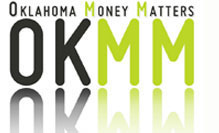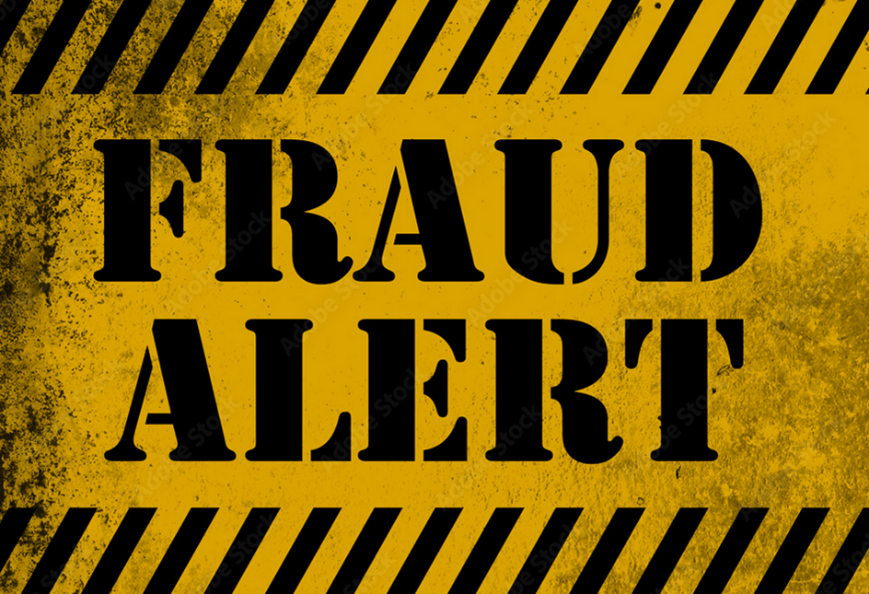Financial Literacy Standards
9. Consumer fraud and identity theft
Not all business interactions are scams,
but remaining vigilant against fraud and
identity theft is essential. Knowing the signs
and preventative measures can safeguard your personal information and financial well-being.
Section 1: How can consumers become victims?
First, it’s important to understand what consumer fraud is so you don’t fall victim.
A. What is Consumer Fraud?
Consumer fraud refers to unfair or deceptive business practices that cause consumers to lose money or be misled. This could be false promises, illegal business transactions or inaccurate claims. Some of the most common scams include credit or debit card fraud, data breaches, debt collection fraud, and false advertising. Look out for the following:
- Medical Fraud: Medical fraud is a form of white-collar crime involving deception to obtain financial gain from healthcare systems. This can include fraudulent billing practices, unnecessary procedures, or misuse of patient information. It can be committed by healthcare providers, patients, or others involved in the healthcare system.
- Imposter Schemes: Imposter schemes are a pervasive type of consumer fraud where criminals deceive individuals by posing as trusted entities or individuals, such as government officials, business representatives, or even family members. The primary goal of these scams is to manipulate victims into divulging sensitive personal information or sending money under false pretenses.
How imposter scams work:
- Building Trust: Scammers leverage positions of authority or close relationships to gain the victim's trust. They might impersonate officials from agencies like the IRS or Social Security Administration, or claim to be from a well-known company or even a distressed family member.
- Creating Urgency/Fear: Scammers often employ high-pressure tactics, threatening legal action, fines, or other negative consequences if the victim doesn't comply immediately. This sense of urgency is designed to make victims act without thinking carefully.
- Exploiting Emotions: Imposter scams prey on human emotions, such as fear, urgency, and trust, to pressure individuals into making hasty decisions. They might convince victims they're in danger or that a loved one needs immediate help, leveraging the victim's emotional connection or concern.
- Forgery: Forgery involves the creation or alteration of documents with the intent to deceive for financial gain. This can range from altering checks or contracts to creating fake IDs or documents used to fraudulently obtain goods or services. For example, a forged check can be used to steal money from someone's account, while a fake ID might be used to purchase age-restricted items. These acts of forgery are often considered white-collar crimes due to their financial motivation and often non-violent nature. The consequences can include both criminal penalties and civil lawsuits.
- Pyramid Schemes: Pyramid schemes, a form of investment fraud, are illegal operations where participants are promised high returns based on recruiting new members, rather than selling genuine products or services. These schemes, often disguised as legitimate marketing programs, rely on a constant influx of new investors to pay earlier participants, ultimately leading to collapse when recruitment slows. The vast majority of participants lose money, as the structure inherently benefits only those at the very top.
- False Billing: False billing occurs when a business sends an invoice for goods or services that were not actually provided or were misrepresented. This can involve sending duplicate or inflated invoices, or creating entirely fake invoices. Such practices can lead to financial losses for consumers, businesses, and even government programs. Consumers should carefully review all bills and invoices to ensure accuracy and report any suspicious activity to the relevant consumer protection agencies, such as the Federal Trade Commission.
B. Common methods used to commit fraud
Criminals commit fraud primarily for financial gain, but the motivations can be complex. Some are driven by greed or financial desperation, while others rationalize their actions by believing they deserve the money or that their actions won't be discovered. Opportunity plays a key role, with weak controls and a lack of oversight that criminals exploit. Additionally, personal pressures like debt, addiction, or a desire to maintain a certain lifestyle can also contribute to fraudulent behavior.
- Bait and switch: Bait and switch is a deceptive sales tactic where a business advertises a product or service at a low price (the "bait") to attract customers, but then tries to sell them a different, often more expensive or inferior, product (the "switch").
- Skimming: Skimming refers to the act of illegally capturing someone's payment card information using a device called a skimmer. These skimmers are secretly attached to legitimate card readers — like those at ATMs, gas pumps or checkout terminals — and are designed to look like part of the machine to avoid detection. When a person swipes or inserts their card, the skimmer reads and stores the information on the card's magnetic stripe, such as the card number, expiration date, and the cardholder's name.
- Change-of-address: Change-of-address fraud, also known as a change-of-address scam, is when an identity thief makes an unauthorized request to the post office to change your mailing address in order to intercept private information and sensitive documents.
- Phishing: Phishing is when scammers impersonate legitimate entities to trick individuals into revealing sensitive information like passwords, credit card details, or bank account numbers. This stolen information is then used for financial gain or identity theft.
C. Consumer fraud and identity theft
Having covered consumer fraud and its various forms to avoid, let's now turn our attention to identity theft.
What is Identity Theft?
Identity theft occurs when someone uses your personal information without your permission, potentially leading to financial or other harm. To protect yourself, research businesses before engaging with them, carefully review documents before signing, and closely monitor your financial statements and credit reports.
Examine these prevalent techniques employed to commit identity theft:
- Unexplained financial transactions – Monitor your bank account closely, and if anything appears suspicious, reach out to your bank and investigate. It’s better to be cautious than to regret it later.
- Unknown accounts or loans – You’re aware of the loans you’ve taken and the accounts you’ve established. If you discover an account in your name that you didn’t authorize, notify the appropriate authorities.
- Significant decline in credit score – Keep an eye on your credit score. It doesn’t decrease without cause, so if you notice a drop, it’s advisable to determine the reason behind it.
Unfortunately, there are a million ways to discover you’ve been a victim of identity theft, and it’s hard to be proactive about all of them. Just stay vigilant and keep an eye on your financials. If anything seems out of the ordinary, report it.
These common methods are used to steal one’s identity:
- Dumpster diving - Dumpster diving refers to the practice of searching through discarded items in public or private trash receptacles to find personal information that can be used for fraudulent purposes. Identity thieves rummage through garbage looking for documents like bank statements, credit card receipts, pre-approved credit offers, and other papers containing sensitive data like Social Security numbers, account numbers, and addresses. This information can then be used to open fraudulent accounts, make unauthorized purchases, or commit other forms of identity theft.
- Hacking – Hacking involves using unauthorized access to computer systems or networks to steal personal information that can be used to impersonate someone else. This stolen information, often obtained through data breaches or phishing attacks, allows hackers to commit fraud, such as opening fraudulent accounts, making unauthorized purchases, or filing false tax returns.
- Social media - Social media provides a platform for criminals to collect personal information and impersonate individuals. Scammers can use social media to gather data, create fake profiles, and execute various fraudulent schemes.
Section 2: How to protect yourself
- Use strong and unique passwords and enable two-factor authentication for added security on your online accounts.
- Monitor your bank and credit card statements for any unauthorized activity and be wary of unexpected calls, emails, or texts asking for personal information.
- Freeze your credit to prevent new accounts from being opened in your name without your authorization, or place a fraud alert on your credit report to encourage lenders to verify your identity before granting credit. Request a free copy of your credit report from AnnualCreditReport.com .
- Stay informed about common scams and protect your computer and smartphone with up-to-date security software.
Section 3: Explain necessary responses if victimized
If victimized by fraudulent business practices or identity theft, immediately report the incident to law enforcement and relevant credit bureaus, freeze your credit, and change passwords for affected accounts. Contacting local police, the Federal Trade Commission, and all three credit bureaus (Equifax, Experian, and TransUnion) is crucial for initiating a recovery plan and protecting your financial information.
Follow these steps:
- Report to Law Enforcement: File a police report with your local law enforcement agency or sheriff's office. This is essential for documenting the crime and potentially aiding in investigations.
- Report to the FTC: File a report with the Federal Trade Commission at IdentityTheft.gov. The FTC provides resources and a recovery plan tailored to your situation.
- Contact Credit Bureaus:
- Fraud Alerts: Contact one of the three major credit bureaus (Equifax, Experian, and TransUnion) to place a fraud alert on your credit report. This alert requires creditors to verify your identity before opening new accounts.
- Credit Freezes: Consider placing a credit freeze with all three credit bureaus. A credit freeze prevents creditors from accessing your credit report, making it harder for identity thieves to open new accounts.
- Change Passwords: Immediately change passwords for all online accounts, especially those related to banking, credit cards, and email. Use strong, unique passwords for each account.
- Review Credit Reports: Obtain copies of your credit reports from all three major credit bureaus to identify any unauthorized accounts or activity. You can get free credit reports annually at AnnualCreditReport.com.
- Monitor Accounts: Regularly monitor your bank accounts, credit card statements, and other financial accounts for any suspicious activity.
- Consider Credit Monitoring: Explore credit monitoring services offered by the credit bureaus or other reputable providers to detect potential identity theft activity.
- Keep Records: Maintain detailed records of all communications, reports, and actions taken in response to the identity theft.
- Seek Professional Help: If the identity theft is complex or you need further assistance, consult with a financial advisor or identity theft specialist.
Take the Quiz!



